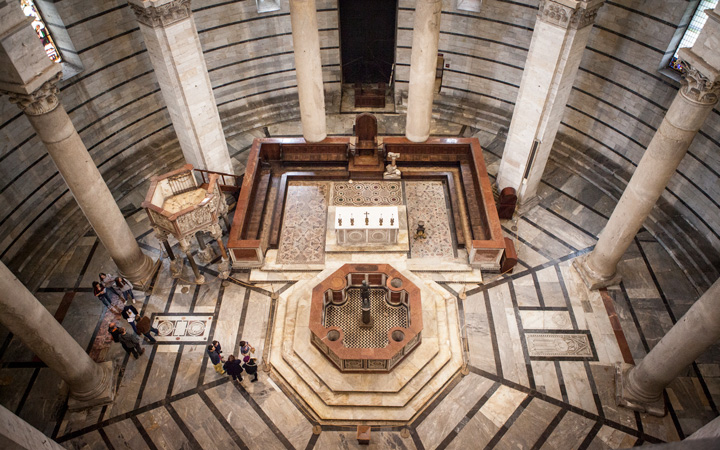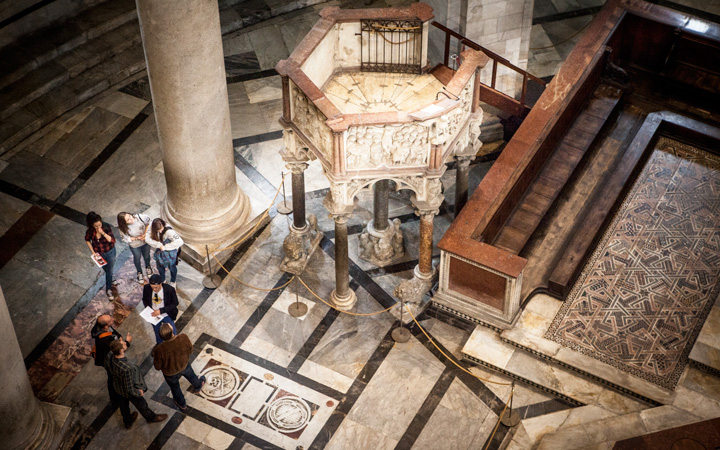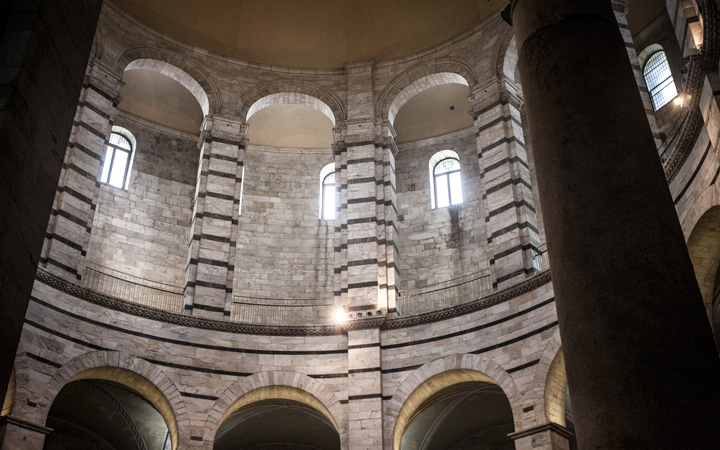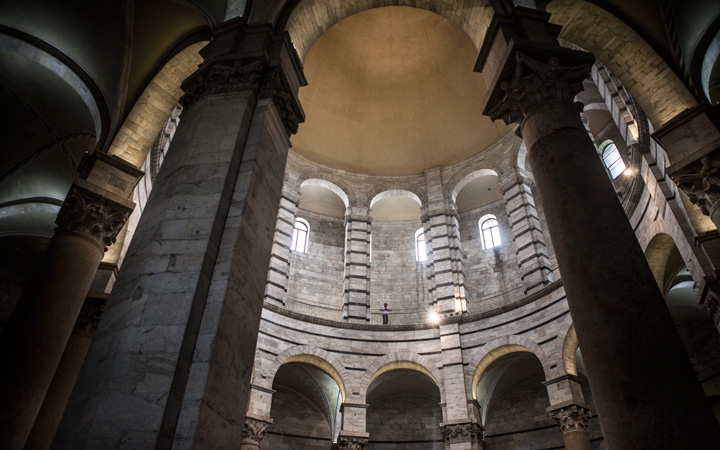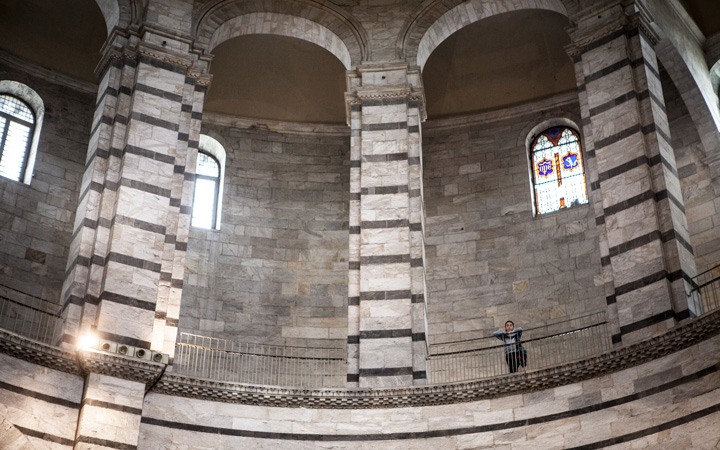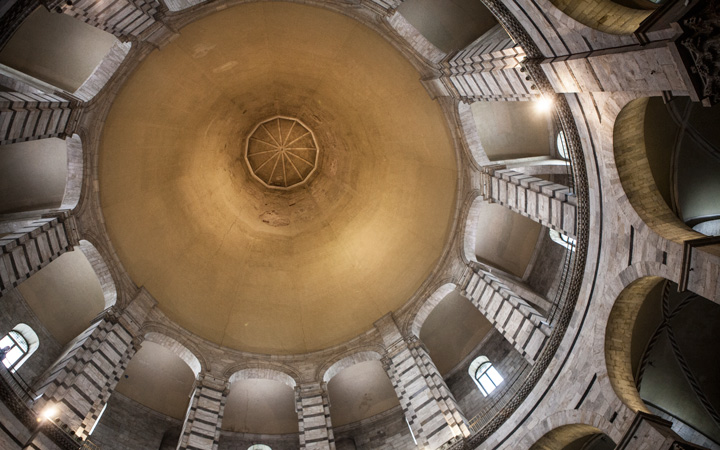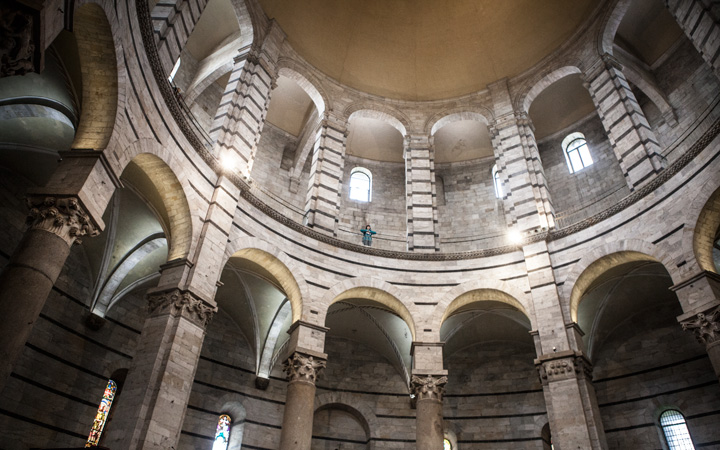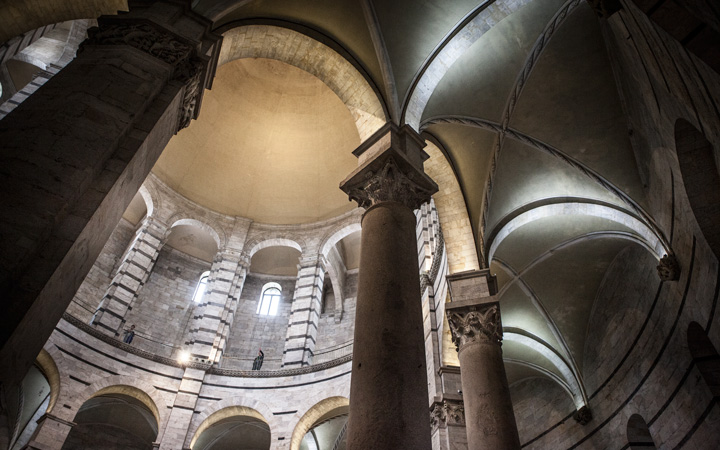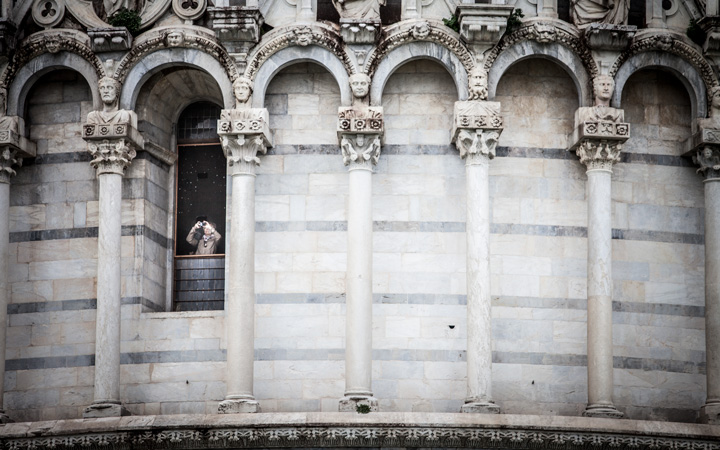Baptistery
The Baptistery of San Giovanni was founded on 15 August 1152. It is here that the Sacrament of Baptism is administered and the Christian embarks upon the path of Faith. The reason that such a fascinating and enigmatic building was constructed was certainly the wish to endow the cathedral with a worthy adjunct: a Baptistery that, in terms of position, size, materials and style, would be in harmony with the majestic building that already stood opposite.
Who was the architect of the Baptistery?
The basic shape of the Baptistery was originally established by Diotisalvi, who supervised its construction from 1152 until about 1180, at least to the top of the first order of arches. The inscription “Deotisalvi magister huius operis”, “Deotisalvi is the architect of this work”, which appears on a pillar in the Baptistery, shows that it was he who built it. Solemn ceremonies, such as the investiture of the Operaio del Duomo, were already being held here in 1185. Towards the mid-thirteenth century the Baptistery building site was again a hive of activity: while Guido Bigarelli da Como worked inside on the baptismal font, the large octagonal basin in which adults and children were immersed to receive the sacrament of baptism, on the outside work started up again, now under Nicola Pisano, together with his son Giovanni, who introduced sweeping changes to Diotisalvi’s structure. Nicola, an architect and sculptor, also made the pulpit (1260), which immediately became a model for others, and it was he too who made the busts set on the archlets on the external loggia, which was later adorned with sculpted figures by his son Giovanni. It was here, at the Baptistery building site, that the “Renaissance” of sculpture began, with the work of Nicola Pisano and later of Giovanni. This was a truly ground-breaking moment for the history of art and represented the moment when “mediaeval” became “modern”.
A prodigious building
With a circumference of 107.24 metres, walls 2.63 metres thick at the base, and a height of 54.86 metres, it is the largest baptistery in Italy. The dome is clad with red tiles on the side facing the sea, and with lead sheets to the east. Like the Cathedral, the great cylinder is encircled by column arcading and built in zebra work of white marble and grey. Eight monolithic columns inside compete in height with those of the Cathedral, alternating with four pilasters. A women’s gallery, reached by a spiral staircase, gives onto the central area, offering a singular view of the intricate geometrical design, of Arabic inspiration, of the floor in the chancel enclosure.
Astonishing acoustics
The vault of the baptistery consists of a double dome – the inner one a truncated cone and the outer one a hemispherical dome. This singular architectural solution gives the Baptistery in Pisa the most exceptional acoustics, making it a monumental musical instrument. This is why, every thirty minutes, the attendant on duty gives visitors a brief demonstration, simply by singing a few notes and letting the fabulous reverberation of the majestic cylinder of the Baptistery do the rest.

